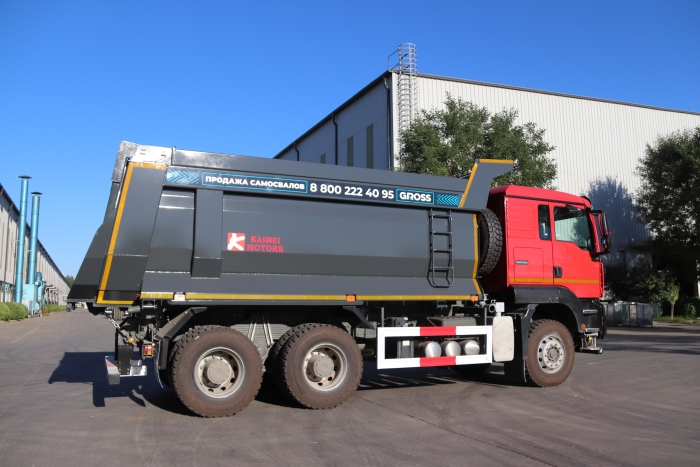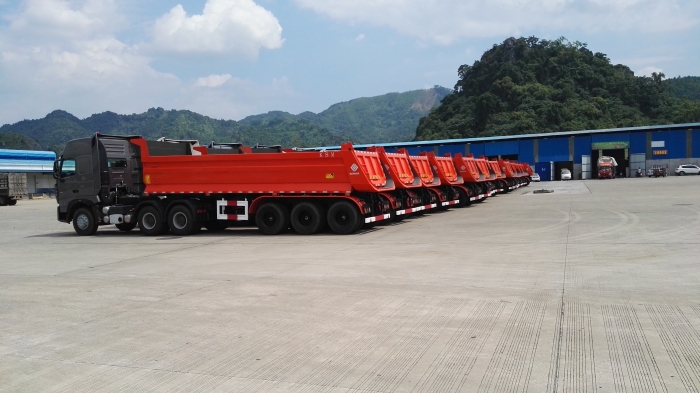- PRODUCTS
- SOLUTION
- SERVICE
- NEWS
- ABOUT US
Yes, expandable semi-trailers adapt to various cargo sizes, extending up to 80 feet in length and 10 feet in width, accommodating oversized loads efficiently.
Expandable semi-trailers, often referred to as extendable semi-trailers, are engineered with versatility and adaptability in mind. Their core design principle revolves around the ability to adjust their length or width to accommodate cargo of various sizes, making them exceptionally suited for transporting oversized loads or a higher volume of goods.
At the heart of an expandable semi-trailer's design is a mechanism that allows for the extension of its platform. This can be achieved through telescopic sections that slide over each other, enabling the trailer to extend its length from a standard 53 feet up to 80 feet or more for specific models. Width adjustments are less common but are applicable in specialized trailers, allowing for a change in width from the standard 8.5 feet to up to 10 feet or more, enhancing the vehicle's capacity to carry wide loads.
Key Design Features:
· Telescopic Mechanism: Enables length adjustments.
· Width Adjustment Capabilities: Allows for width expansion, increasing load versatility.
· Modular Sections: Facilitate the addition or removal of trailer parts to suit cargo size.
These features significantly impact the versatility and flexibility of the vehicle, allowing it to serve a wide range of transportation needs, from standard loads to oversized equipment.

Operating an expandable semi-trailer involves a series of steps to safely and effectively adjust the vehicle's size.
1. Inspection and Preparation: Before any adjustments, a thorough inspection of the trailer and its mechanism is essential to ensure safety.
2. Unlocking the Telescopic Sections: The locking pins or bolts that secure the telescopic sections in place are removed or disengaged.
3. Extending or Reducing the Trailer: The trailer is then manually or hydraulically extended or retracted to the desired length. In the case of width adjustments, similar steps are followed.
4. Securing the Adjusted Length: Once the trailer has been adjusted to the desired size, it is crucial to secure the telescopic sections back in place using locking pins or bolts to ensure the stability of the load during transport.
Convenience and Limitations:
The adjustment mechanism of expandable semi-trailers offers significant convenience by enabling a single vehicle to transport a wide variety of cargo sizes, reducing the need for multiple specialized trailers. However, there are limitations, including:
· Maximum Extension Limits: Each trailer has a maximum extendable length and width, beyond which it cannot be safely operated.
· Weight Distribution: As the trailer extends, careful consideration must be given to the distribution of weight to maintain stability and comply with road safety regulations.
By understanding these operational nuances, users can effectively leverage the adaptability of expandable semi-trailers, making them a valuable asset in the logistics and transportation industry.
Expandable semi-trailers showcase a remarkable ability to adapt to a wide range of cargo sizes, from small, compact loads to oversized equipment that requires more space than a standard trailer can offer.

The design of expandable semi-trailers includes mechanisms for adjusting length and, in some cases, width, to accommodate various cargo sizes. The typical extendable semi-trailer can adjust its length from a standard 53 feet up to 80 feet or more, depending on the model and design. Width adjustments, though less common, can expand a trailer's width from the standard 8.5 feet to 10 feet or more, providing additional space for wider loads.
Adaptability Challenges for Extreme Sizes:
Handling extremely large or small cargo poses unique challenges. For oversized loads, even though an expandable trailer can increase its size, there are legal and practical limits to how much a trailer can safely transport, influenced by road regulations and the physical capabilities of the trailer's structure. Small cargo, while easily accommodated, might not utilize the trailer's full potential, leading to inefficient use of space unless properly planned.
Adjusting the size of an expandable semi-trailer to suit different cargo sizes directly impacts its performance and efficiency, affecting factors like fuel efficiency, transportation speed, and payload capacity.
· Fuel Efficiency: The extended length or width of a trailer can increase air resistance, potentially reducing fuel efficiency. However, the ability to carry more cargo in a single trip can offset this by reducing the number of trips required.
· Transportation Speed: Larger, extended trailers may face restrictions on certain roads or require special permits, potentially slowing down the transportation process.
· Payload Capacity: Extending a trailer allows for a greater payload, but this must always comply with legal weight limits. The distribution of weight across the extended trailer also requires careful planning to maintain stability and safety.
Table of Performance Impact:
Trailer Configuration | Fuel Efficiency | Transportation Speed | Payload Capacity |
Standard Length | High | High | Standard |
Extended Length | Moderate | Moderate | Increased |
Extended Width | Moderate | Moderate to Low | Increased |
In summary, expandable semi-trailers offer significant flexibility in adapting to different cargo sizes, but this adaptability comes with considerations for performance and efficiency. This adaptability not only enhances the utility of semi-trailers in diverse transportation scenarios but also underscores their role in efficient logistics and supply chain management.

The unique design of expandable semi-trailers, while offering versatility and adaptability, also introduces specific maintenance needs and considerations for durability. The complexity of their mechanisms can impact both their maintenance requirements and overall lifespan.
Expandable semi-trailers require regular maintenance to ensure their mechanisms function correctly and safely. Additionally, the locking mechanisms that secure the trailer in its extended or contracted positions need frequent checks to prevent accidental movement during transport.
Common Maintenance Issues and Preventive Measures:
· Mechanical Wear: Regular lubrication of moving parts reduces the risk of mechanical wear.
· Corrosion: Applying corrosion-resistant coatings and regular cleaning can prevent rust and corrosion, particularly in the telescopic sections exposed to the elements.
· Hydraulic System Maintenance: For trailers that use hydraulic systems for extension, regular checks of the hydraulic fluid and system pressure are essential to avoid leaks and ensure smooth operation.
Comparing the costs, efficiency, and applicability of expandable semi-trailers to traditional semi-trailers reveals distinct advantages and considerations, especially regarding the long-term economic benefits of investing in expandable technology.
Aspect | Expandable Semi-Trailer | Traditional Semi-Trailer |
Initial Cost | Higher due to complex mechanisms | Lower |
Maintenance Cost | Potentially higher due to specialized parts and mechanisms | Lower, with simpler maintenance |
Efficiency | Higher for oversized or variable loads | Standard for consistent load sizes |
Versatility | Extremely high, can adapt to various cargo sizes | Limited to fixed dimensions |
Long-term Benefits | Cost savings on multiple trips and ability to carry diverse loads | Lower adaptability may require investment in multiple trailers for different loads |
Long-Term Economic Benefits:
Investing in an expandable semi-trailer can offer significant economic advantages in the long term. The ability to adjust the trailer size allows for a more flexible response to varying cargo needs, potentially reducing the necessity for multiple trailers. Moreover, the ability to transport oversized loads can open up new business opportunities that traditional trailers cannot accommodate. While the initial cost and potential maintenance expenses are higher, the increased efficiency and versatility often justify the investment, especially for companies with diverse transportation needs.
In conclusion, while expandable semi-trailers present unique maintenance and durability considerations, their versatility and efficiency offer substantial benefits. Careful maintenance and utilization of these trailers can mitigate their complexity and cost, ensuring they remain a valuable asset in any fleet.